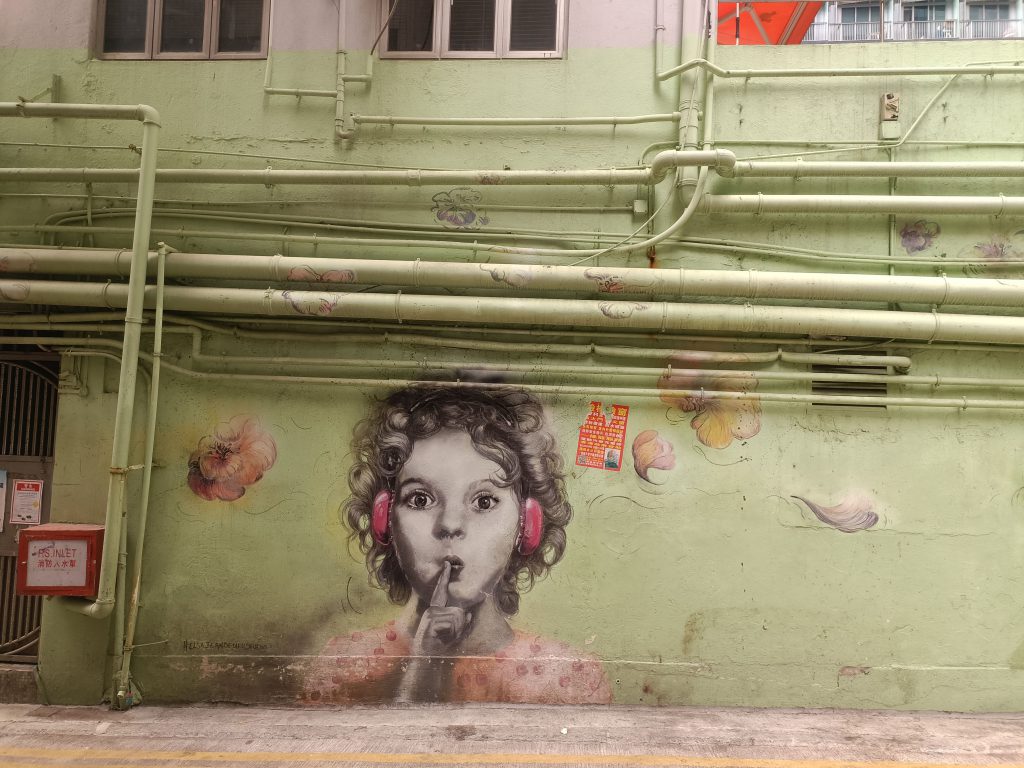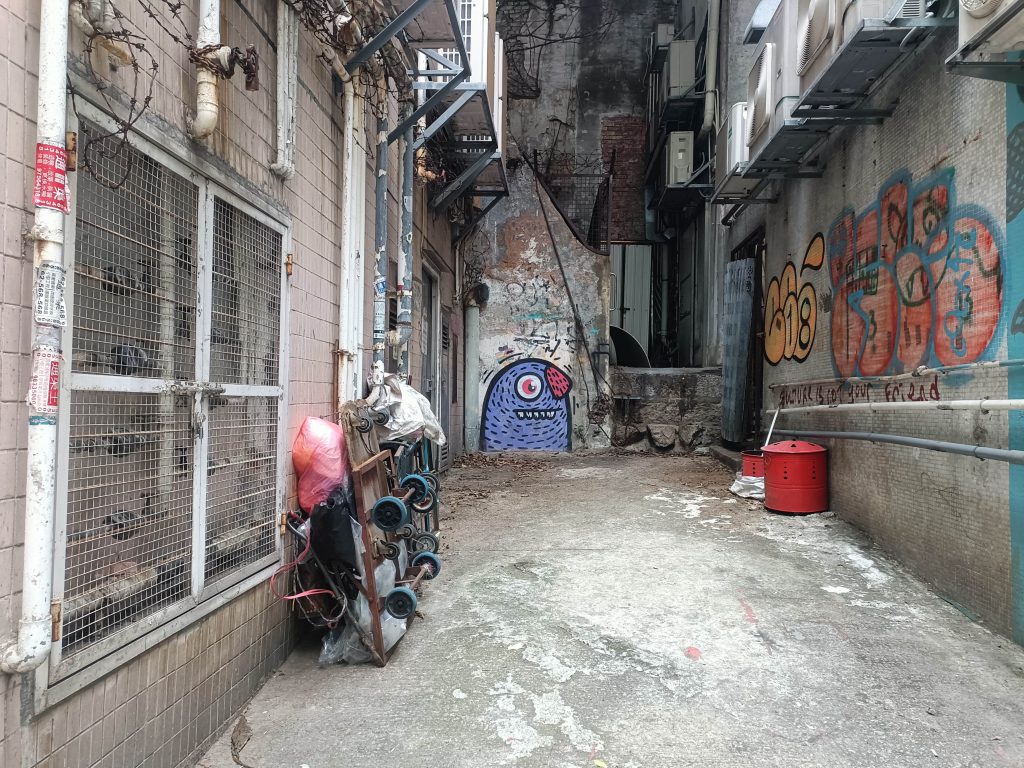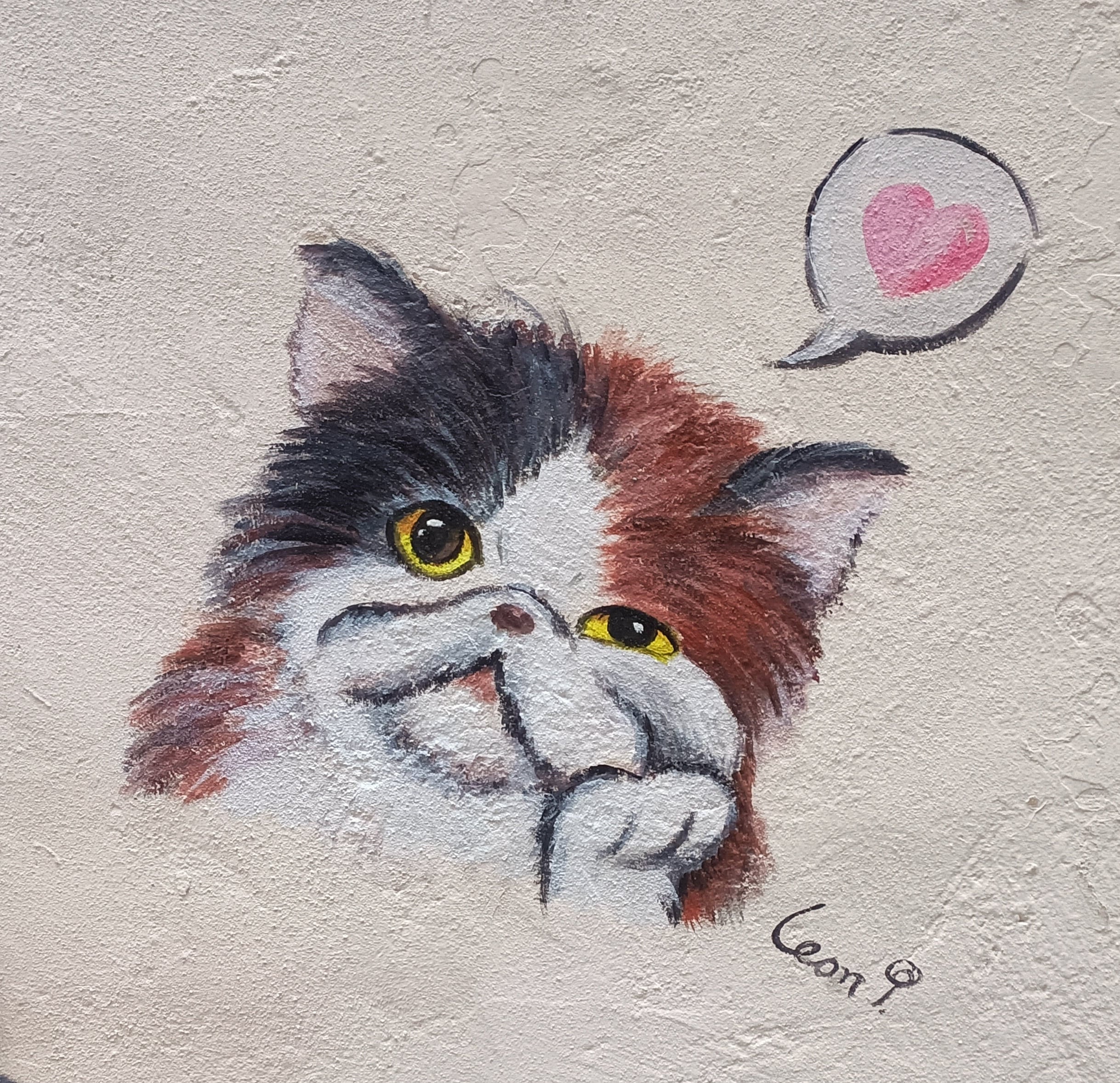- What is the space/place/artifact/building that is vanishing, and why is it vanishing?
We believe the graffiti in Hong Kong will disappear in near future.
Graffiti originally referred to a drawing that a person drew on a piece of paper either carelessly or by letting their imagination run wild, but as it evolved, graffiti slowly evolved into a visual typography art. We believe there are three reasons why graffiti has disappeared.
First, the environment and the cleanliness of the city. Bridges, trestles, walls and platforms are natural places where graffiti enthusiasts and crews can share their work. However, with more and more people creating graffiti in these places, the environment and the cityscape are becoming more and more disturbed. Some graffiti is also found on trees, municipal facilities, and storefronts. The paint used for graffiti is difficult to clean, and for sandy walls, there can be a high social cost to clean up these graffiti. Even the odour of the paint can cause physiological reactions to plants and people passing by.

Secondly, the legal problem of graffiti. With the development of society, graffiti is not only presented as a kind of visual art, but also an outward expression of personal thoughts. Many graffiti enthusiasts will present their favourite things with graffiti as a carrier, but there are also much graffiti that is very casual. The contents of these graffiti include inciting confrontation, expressing dissatisfaction with society, and some radical remarks.
Thirdly, the renewal of buildings. With the development of society, the government has continuously launched some redevelopment and renovation programs to enhance the social outlook. In the process, graffiti will be removed and covered.
- What do we know about its past and present?
The history of graffiti in Hong Kong dates back to the 1950s, started by a man known as the “Emperor of Kowloon”. David Spalding (2013) He was obsessed with graffiti in the form of calligraphy and he writes on any surface he can find. Although he was accused of vandalism and even his family disowned him, thinking he is mentally ill, after years and years of persistence, his work was finally acknowledged and now he become a symbol of Hong Kong. Sasha Zhao (2012)
In the past, graffiti has represented a street culture and the creativity and expression of the young generation. Graffiti enthusiasts would express their ideas on walls, buildings and public spaces in this unique form of art, so graffiti also represents energy and freedom. Graffiti enthusiasts combine creativity with reality by painting streets and walls with colours and patterns that add vibrancy to the city.
Nowadays, graffiti also attracts a certain number of tourists to stop by and take photos, as they are an emblem of the diversity and identity of Hong Kong. These graffiti represent Hong Kong’s street culture, contemporary values, and elements of contemporary culture, showing Hong Kong’s charm as a cosmopolitan city.
Over the years, the purpose of graffiti did not change, but more graffiti started to appear and get appreciated by people in Hong Kong.
You can find them everywhere, especially at the corners of the alleys or other secluded areas. Due to its nature, artists tend to stay
anonymous with their work, and that’s what makes graffiti so special from other arts:
the creators have absolute freedom in their
creation, and the artwork is mostly rich with emotions or any personal aesthetic without the fear of being criticized by the public. For the same reason, graffiti might not always be artistic, sometimes they are also used for advertisement or expressing political
thoughts.
- Who are and/or will be affected when it no longer exists? What are their feelings and attitudes toward this?
The disappearance of graffiti will affect graffiti enthusiasts and artists in the following ways.
First, the reduction of creative space. The fact that the original place of creation has been covered and removed, or even banned, reduces the creative space for graffiti lovers and artists, and there is no physical vehicle that can carry their expressions. 
Second, the a lack of cultural and community identity. Graffiti is often associated with the street, and the street is associated with the community. If graffiti disappears, these graffiti enthusiasts and artists lose their means of expression with the community and culture to which they belong.
Tourists who travel in Hong Kong would also be affected as they find some famous graffiti spots have been painted over. It’s not only disappointing for themselves, but also a pity when a piece of work is lost and will never be shared with the world.
Probably, the residents of the building will be relieved, because they will no longer see the childish doodle beside their window every day. Maybe a clean, whitewashed wall is better suited for these people living in an already busy city.
- What is being done about its impending disappearance?
Throughout time, much graffiti has been created and destroyed, and despite people’s wishes to preserve them, the Hong Kong government never ceased the effort to renovate the appearance of the city. Kylie Knott (2022) The touching story of the “Emperor of Kowloon” made the government promise to protect his artworks. Some of the artists also chose to express themselves in the open, in the areas where graffiti is allowed by the government. However, it is also hard for the government to enact a perfect law because of the numerous implications graffiti presents. Maybe the best way to preserve this culture of Hong Kong is to ask for permission from the government or residents before taking action, just like some artists already did. Tsz Yu Chan et al. (2020)

Authors:
- Zhang Suo 3036100533
- Zhang Hengruixiang 3036265371
References
- David Spalding. ‘Framing the margins: In search of contexts for Tsang Tsou-choi’, King of Kowloon: The Art of Tsang Tsou-choi, Bologna, Damiani, p71-83 (plus Chinese translation p84-92), 2013.
- Sasha Zhao. THE GRAFFITI DIARIES OF THE KING OF KOWLOON, Post In LEAP, 14 June 3, 2012
- Kylie Knott. Disappearing acts: Hong Kong street art faces official erasure despite government pledges to boost artistic creativity and appreciation, South China Morning Post, 2022
- Tsz Yu Chan, Alasdair Nott, Jadon Dharmawan002E GRAFFITI IN HONG KONG, January 20, 2020